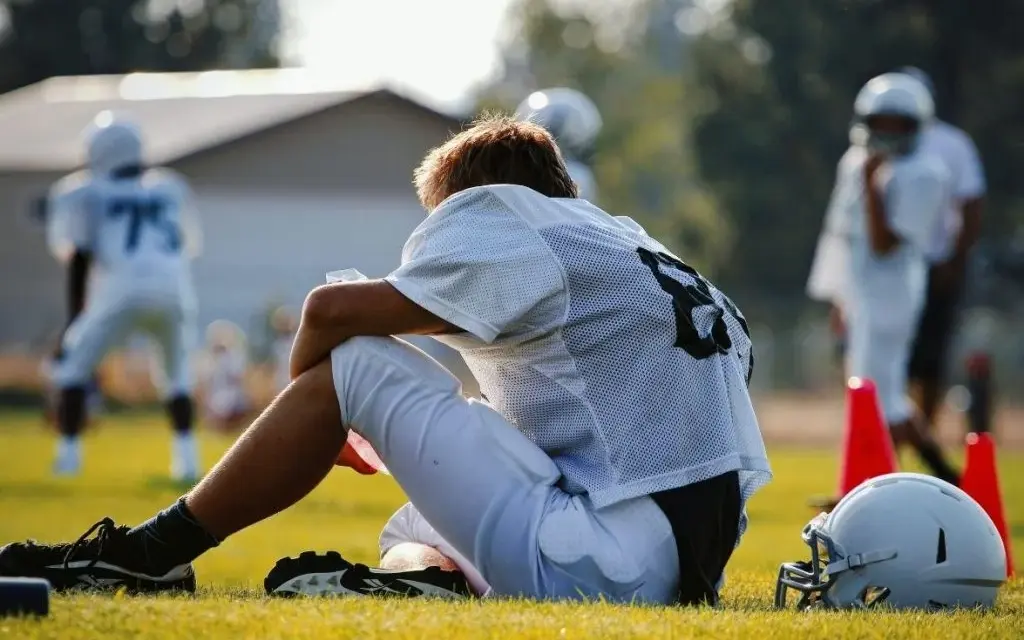The Psychological Dimension: When Mental Training Loads Exceed Physical Capacity
While much attention focuses on physical overtraining markers—elevated resting heart rate, decreased performance, increased injury susceptibility—sports psychologists increasingly recognize that psychological overtraining often precedes and predicts physical breakdown. Some youth programs now even integrate digital tracking tools, like performance-monitoring apps, similar to what athletes explore in platforms such as dbbet apk, to identify early signs of mental fatigue.
Dr. Amanda Foster, who works with youth development programs in tennis and gymnastics, describes a phenomenon she calls “performance anxiety spiral.” Young athletes, typically between 13 and 16, begin experiencing mounting pressure from coaches, parents, and their own internalized expectations. Their response? They train harder, believing that more effort equals better results.
“I’ve seen kids who are technically not physically overtrained by traditional metrics, but they’re psychologically fried,” Foster notes. “They’re having stress dreams about their sport, they’ve lost all joy in competition, they’re either obsessing over their training data or completely avoiding it. These are the kids who often quit their sport entirely by age 17, despite having significant talent.”
The data supports her observations. A longitudinal study tracking 1,200 youth athletes across six sports found that psychological burnout symptoms typically appeared 3-6 months before measurable physical overtraining indicators.
Historical Perspective: Learning from Past Mistakes
Youth sports development has experienced several paradigm shifts over the past four decades, each carrying its own set of unintended consequences. The 1980s brought us the “early specialization” model, heavily influenced by Eastern European training systems that produced Olympic champions but also, as we later learned, systematic abuse and premature burnout.
The 1990s swung toward “sport sampling” and late specialization, promoted by researchers who correctly identified the risks of early intensive training. But this approach, while reducing burnout rates, struggled to produce athletes capable of competing at the highest international levels in sports that genuinely require early technical development.
Yet even this evolved approach contains inherent tensions. Consider swimming, where technical development windows are particularly narrow. Elite age-group swimmers often train 15-20 hours per week by age 14—a volume that would challenge many adult recreational athletes. The question isn’t whether this is “too much” in absolute terms, but whether it’s appropriately periodized, individually tailored, and psychologically sustainable.
The Economics of Excellence: When Business Pressures Drive Training Decisions
Perhaps no factor contributes more to youth overtraining than the economic realities of modern competitive sports. Club programs, private coaches, and training facilities operate businesses that depend on producing results. Parents invest thousands of dollars annually in their children’s athletic development, creating implicit pressure for visible progress and achievement.
This economic dynamic creates what sports sociologist Dr. Jennifer Walsh terms “training load inflation.” The scholarship chase intensifies these pressures. With college athletic scholarships increasingly competitive—according to NCAA data, only about 3.7% of high school athletes receive any college athletic scholarship, and full scholarships are even rarer—families view intensive youth training as an investment in future educational funding.
“I’ve had parents tell me they’d rather have their kid overtrained and on a college team than properly trained and ‘just’ a recreational athlete,” reveals one youth coach who requested anonymity. “When you’re looking at $200,000 in college costs, spending $15,000 a year on training seems like smart economics, even if it’s not smart athletic development.”
Cultural Variations: How Different Sports Approach the Challenge
The overtraining challenge manifests differently across various sports, reflecting distinct cultural attitudes toward youth development and performance optimization. Endurance sports present perhaps the most complex challenge. Running, cycling, and triathlon require extensive aerobic base development that typically occurs through high training volumes. Yet young athletes in these sports show particular susceptibility to overtraining syndrome, partly because endurance training stress is less immediately obvious than strength training fatigue.
“You can see when a young weightlifter is overdoing it—their form breaks down, they can’t complete their sets,” notes exercise physiologist Dr. Rebecca Martinez. “But a young distance runner can maintain pace and form even while developing significant overtraining syndrome. The feedback loops are much more subtle.”
The Path Forward: Emerging Solutions and Best Practices
Progressive youth sports programs are beginning to implement innovative approaches to overtraining prevention that balance systematic training methodology with individualized development needs. These emerging models share several common characteristics: emphasis on long-term athletic development rather than short-term results, integration of multiple recovery modalities, and sophisticated understanding of adolescent physiology and psychology.
Some programs now employ “training load budgets”—systematic approaches to managing total stress across all life domains.
Other innovations focus on improving recovery quality rather than reducing training quantity. Advanced sleep monitoring, nutrition optimization, stress management techniques, and even mindfulness training are becoming standard components of elite youth development programs.
Perhaps most importantly, the best programs are developing more sophisticated coach education initiatives.
Looking Ahead: The Future of Youth Athletic Development
The overtraining challenge in youth sports reflects broader tensions in our approach to human development and performance optimization. As our understanding of exercise science advances and our measurement capabilities improve, we face the ongoing challenge of applying this knowledge wisely rather than simply applying it maximally.
The most promising developments focus not on finding the perfect training formula—which probably doesn’t exist—but on developing better systems for individualization, monitoring, and adjustment. Young athletes represent moving targets in the best possible sense: constantly growing, adapting, and changing. Our training approaches must match that dynamism with equal flexibility and sophistication.


